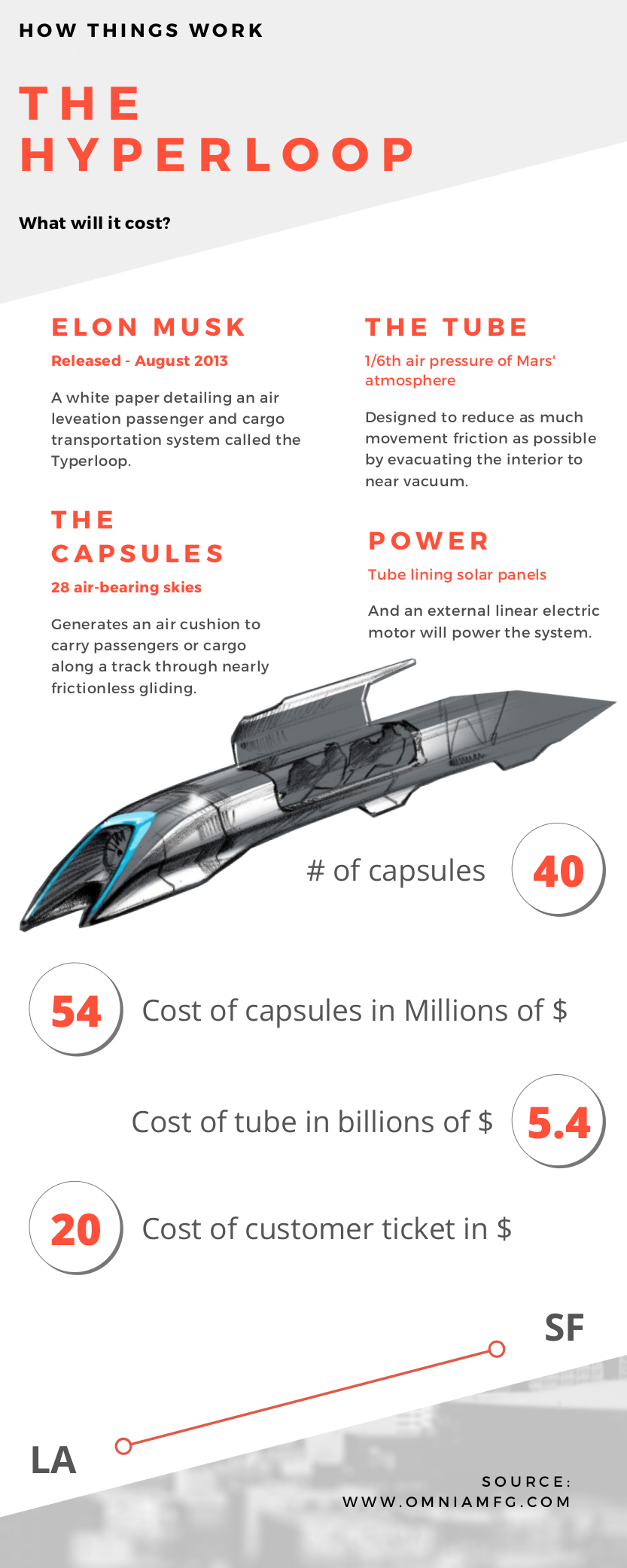How Things Work: The Hyperloop
What is the Hyperloop?
Elon Musk released a white paper detailing an air levitation passenger and cargo transportation system concept, called the Hyperloop, in August 2013 and hosted a design competition around the world.
The Hyperloop tube is designed to reduce as much movement friction as possibly by evacuating the interior to near vacuum, or approximately 1/6 the pressure of Mars’ atmosphere.
The capsules, used to carry passengers or cargo, levitate on a set of 28 air-bearing skis that generate an air cushion for near friction-less gliding along the track.
The system will be powered from solar panels along the tube and an external linear electric motor.
How Much will the Hyperloop Cost?
In his white paper concept, Elon detailed an anticipated cost of the Hyperloop system connecting Los Angeles and San Fransisco. Below is his breakdown:
Capsule Total - $54 Million for 40 Capsules
Capsule Structure + Doors – $9.8 Million
Interior + Seats - $10.2 Million
Compressor + Plumbing - $11 Million
Batteries + Electronics - $6 Million
Propulsion - $5 Million
Suspension + Air Bearings - $8 Million
Components Assembly - $4 Million
Tube Total - $5,410 Million Between LA and SF
Tube Construction - $650 Million
Pylon Construction – $2,550 Million
Tunnel Construction - $600 Million
Propulsion - $140 Million
Solar Panels + Batteries - $210 Million
Station + Vacuum Pumps - $260 Million
Permits + Land - $1,000 Million
Cost Margin - $536 Million
Check out Musk’s white paper concept here: Hyperloop Alpha (PDF)
Jarrett Linowes
Mechanical Engineer
omniamfg@gmail.com
Did I miss anything you are interested in? Send me an email or comment below!





